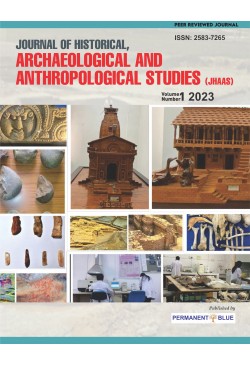
Journal of Historical, Archaeological and Anthropological Studies
Frequency :Bi-Annual
ISSN :2583-7265
Peer Reviewed Journal
Editorial Note
Contexting Sindhol: A Hilltop Gupta Period Settlement in the District Subarnapur, Odisha, India
A Study of Cultural Resource Management of Prehistoric Sites Bantoli in Gumla District and Toyontoli in Ranchi District of Jharkhand
Archaeological Findings and Structural Remains Recovered from Jalalabad Block of District Fazilka, Punjab: An Archaeological Assessment
Vamana Figures: An Artistic Representation of Achondroplasia and the Utility of Achondroplastic People as a theme to Artistically Illustrate the Concepts of Vamana and Bhairava....
Keywords: Vamana, Bhairava, Achondroplasia, Carvings
Findings of Archaeological Exploration at Fazilka and Khuiyan Sarwar Blocks in Fazilka, District, Punjab
Archaeological Significance of the Garhwal Himalayan Foothills of Uttarakhand
Exploring the Industrial Heritage of Our Past - A Study of the Shell Industry in Ancient Tamil Nadu
Lord Jagannath a Tribal Deity: Exploring the Folklores, Myths and Legends
Zaman, R. 2023. Lord Jagannath A Tribal Deity: Exploring the Folklores, Myths and Legends. Journal of Historical, Archaeological and Anthropological Studies, 1: 2, pp. 157-162